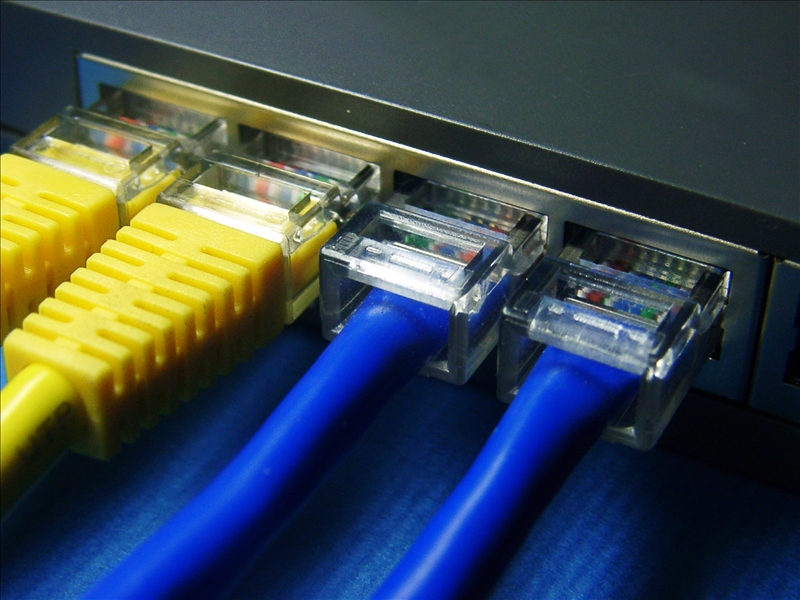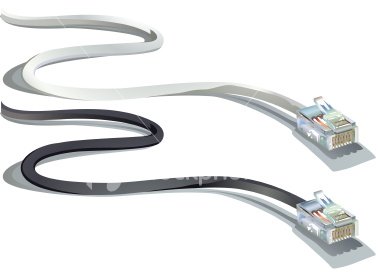
 Sophisticated technology has made it possible for the new generation of entrepreneurs to enjoy Cat5, Cat6, and fiber optic cabling. These technologies amplify speed, enhance performance and reduce costs.
Sophisticated technology has made it possible for the new generation of entrepreneurs to enjoy Cat5, Cat6, and fiber optic cabling. These technologies amplify speed, enhance performance and reduce costs.
Cat5
Cat5 refers to structured cabling for transmission of data signals. This is used primarily for computer networks. Standard performance is a maximum of 100 MHz and fits into the Gigabit and Fast Ethernet.
Cat5 carries other signals for video and telephony. Almost all Cat5 cables are unprotected and depend on balanced lines and twisted pair designs as well as differential signals to reject noise.
Cat6
Cat6 is considered standard for Gigabit Ethernet along with network protocols that require more speed than
Cat5 cables. Cat6 is made up of four pairs of wires comparable to Cat5. Using all four pairs allows this model to support communications that are double the speed of Cat5. This translates to speeds of one gigabit/second.
Fiber Optic Cabling
Fiber optic cabling or optical fiber is distinct from Cat5 and Cat6. It utilizes light rather than electricity to transmit signals. It has a better signal compared to the traditional
copper cables, so it sends signals more rapidly than is possible with copper cable. Optical fiber is also impervious to interference from electricity, which means that users can use it anywhere and anytime. Fiber optic cabling also allows for much longer transmission distances. Cat5 and Cat6 are limited to only 100m of cable from wallplate to computer.
Even telephone companies have started to phase out copper wires in favor of fiber optic cables. Technical experts of these firms are working to reduce the vulnerability of
fiber optic cables to water. Using fiber optic provides enterprises the adaptability of augmenting bandwidth in just several days compared to the conventional copper circuits, which usually take a maximum of one month to upgrade. Fiber optic connections generally start at two megabytes, with dedicated upload and download speeds of up to one gigabyte.
Fiber Connection
The fiber connection will also facilitate the business-mode Service Level Agreement or SLA. This implies that business entities obtain a secured 99.99 percent uptime. If power failure and other issues occur, technical specialists can conduct repairs within a maximum period of four hours. Your business reaps the benefits of speed, assured uptime and fast
service by a reputable company like Progressive Office Cabling. It makes use of high-quality cables along with connectivity parts as well as the most efficient systems in cable management. The company’s technicians have been trained properly to be able to respond to your demands. With a proven project management approach, effective communication is guaranteed during the entire project.
This kind of service is practically unmatched in this industry. Savvy users and business proprietors will know how to choose the service provider that can deliver solutions based on their requirements.

 The wire conduit refers to the pipe where cabling passes through. This duct protects insulation and isolates cable wiring. National and local building codes generally require the use of a particular type of conduit for safety and health reasons. The cable conduit is different from the electrical variety. You can install cabling conduits in between walls even if you will not use these pipes immediately; in fact, it is easier and more cost-effective to lay out the conduit during the construction phase.
The wire conduit refers to the pipe where cabling passes through. This duct protects insulation and isolates cable wiring. National and local building codes generally require the use of a particular type of conduit for safety and health reasons. The cable conduit is different from the electrical variety. You can install cabling conduits in between walls even if you will not use these pipes immediately; in fact, it is easier and more cost-effective to lay out the conduit during the construction phase.


 Corporate organizations need to share information efficiently. There are two options for them when it comes to setting up database applications; it is a choice between hard-wired
Corporate organizations need to share information efficiently. There are two options for them when it comes to setting up database applications; it is a choice between hard-wired 
 will remain dominant in the structured cabling systems industry. This conclusion is based on analysis and forecasts made by several cabling installation companies worldwide. Both copper and optic fiber cabling are used for key structured cabling systems applications like LAN, data centers, and Voice over Internet Protocol (VoIP). Optic fiber is gradually gaining in popularity, but copper cable still seems to be the major preference of most companies.
will remain dominant in the structured cabling systems industry. This conclusion is based on analysis and forecasts made by several cabling installation companies worldwide. Both copper and optic fiber cabling are used for key structured cabling systems applications like LAN, data centers, and Voice over Internet Protocol (VoIP). Optic fiber is gradually gaining in popularity, but copper cable still seems to be the major preference of most companies.


 The conventional process of
The conventional process of 
 is an essential component in your network. It also has a long life span, from 15 to 20 years, so it may be necessary to replace your network equipment at least three times during the life of the cabling configuration. Cable installation is roughly 15 percent of the total network outlay. So it is advisable to invest in premium cabling systems, particularly to reduce maintenance costs and downtime while also achieving improved network performance. Entrepreneurs are always advised to look at the long-term scenario and acquire the best cable installation available.
is an essential component in your network. It also has a long life span, from 15 to 20 years, so it may be necessary to replace your network equipment at least three times during the life of the cabling configuration. Cable installation is roughly 15 percent of the total network outlay. So it is advisable to invest in premium cabling systems, particularly to reduce maintenance costs and downtime while also achieving improved network performance. Entrepreneurs are always advised to look at the long-term scenario and acquire the best cable installation available.

 An efficient
An efficient